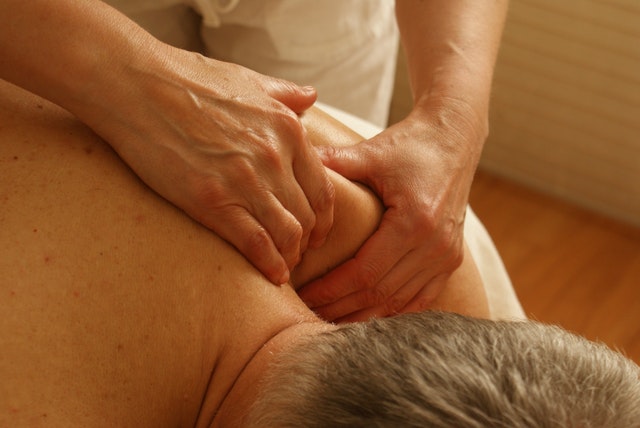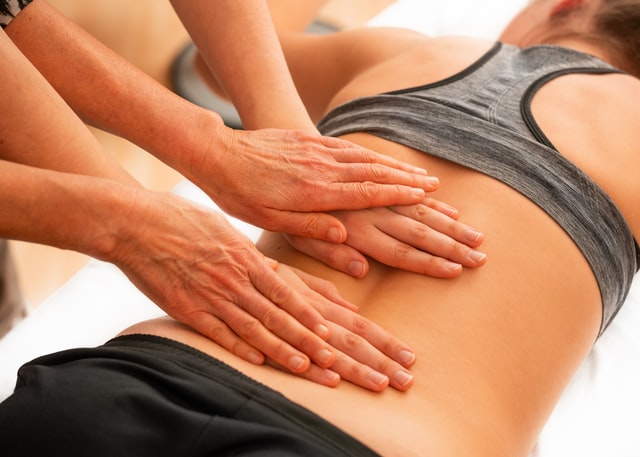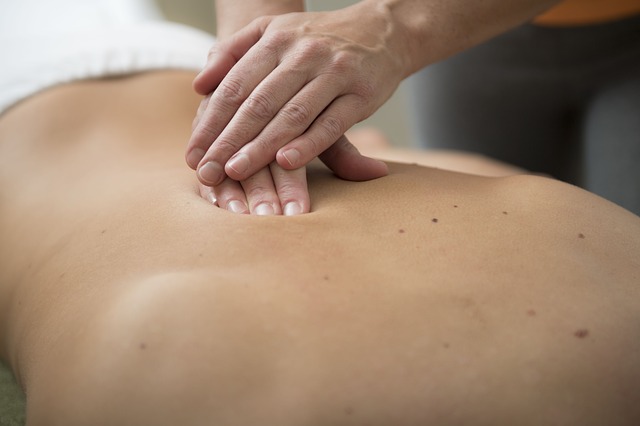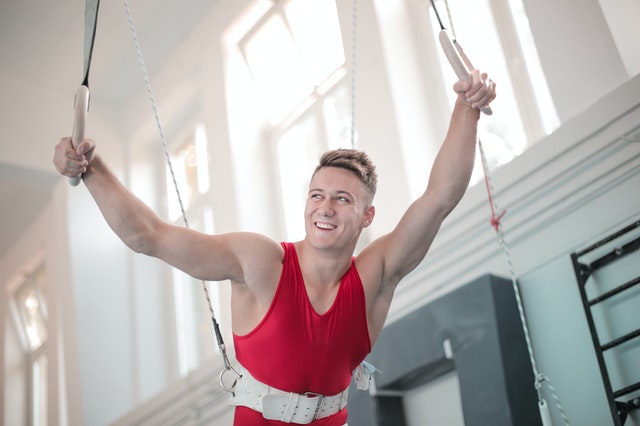Bouncing Back in Half the Time
Recover from Athletic Injuries Faster using Chiropractic Care

Depending on your level of activity, sports injuries can almost feel like an inevitability. Everyone gets hurt at some point, from a simple sprain or tear to something more serious like fractures or dislocations. The truth of the matter is, things aren’t that simple, and there’s a lot you can do both pre and post-injury to help keep your body healthy and on the road to recovery. This includes proper maintenance and training before working out, knowing your limits and planning your work out properly, as well as knowing what to do if you are injured and how to keep the damage to a minimum.
Before You Work Out

Preparing for a workout is extremely important. Many sports injuries are either the result of not warming up enough or not warming up properly before working out. Depending on your workout routine, you might lean more towards different warm up types. It is important to do some kind of warm up before almost any workout though, since it will prepare your muscles and joints for the more strenuous exercise to come, improving their elasticity and mobility.
If you’re going to run or play a high activity sport like soccer or football, avoid doing static stretches before your workout and save them for your cool down after you exercise. Instead, focus on dynamic stretches. Dynamic stretches like side shuffles, walking lunges, straight leg kicks, and heel to rear jogs actually mimic the type of forces and stresses you’ll be putting on your joints as you run, preparing your body more adequately for your workout than a static stretch would. Inversely, if you’re going to do low impact weight training, static stretches can help prepare your body for holding certain positions for extended periods of time, which mimic many of the positions you’ll be in when performing exercises like deadlifts, squats, and presses.
Knowing Your Limits

Another major cause of injury is when you progress your workout too quickly. This is most commonly seen in runners since something as seemingly benign as adding a hill to your path often leads to a plethora of ankle injuries, ranging from sprains, rolls, tears, and even fractures. If you’re running, progress from stable even ground (such as a concrete path) to soft (such as a dirt or sand path) to uneven (gravel or cedar mulch) and finally inclines. This should be a slow and steady progression if you’re not accustomed to running, so don’t expect to be powering through all of these path types in a single day, or even within the span of a week.
When it comes to lifting or other sports, a good indicator of when you should stop or take a break is your form. Maintaining proper form is not only key to getting a good workout and properly working all of the muscles you’re trying to target, but it’s also important for preventing injury. Having poor form moves and works your muscles in awkward positions, leading to strains and pulls or even muscle tears if you’re working with more weight than you can handle. If you feel your form starting to slip consistently, it might be time to take a break or move on to the next muscle group.
Knowing Where to Start

If you’re new to working out, it can be hard to know where to start. When it comes to running, start off on a stable surface like concrete, and time yourself running at a steady pace. Consistency is key here. If you find yourself getting winded after just a few seconds, slow down. If you barely feel anything at all and after a few minutes aren’t even starting to get tired, you’re probably going a bit too slow.
For weight lifting, you’re going to want to find your rep max. This is basically the weight at which you can do a certain number of reps before having to stop for a short rest or when your form starts to slip. Focus on finding your 8 rep max, essentially whatever weight you can do 8 reps at before stopping, and then do three sets at that weight taking a short break in between each set.
Once you have worked up the endurance to where you can push past that limit easily, it is time to either up the weight or up the reps. If you are upping the weight, do not increase the weight in increments greater than 10lbs. Gradually increase the weight to find that new 8 rep max and continue on from there.
Be Aware of Your Back

Your form is the most important part of most workouts, and in almost any exercise you’ll want to have your spine aligned properly. In most exercises or workouts, your back should stay straight. For example, when doing a Romanian deadlift, your back stays straight and most of your body hinges at the hips. Letting your spine arch forward instead is a recipe for disaster, as the spine wasn’t designed to lift that kind of weight. The same goes for rotationals and anti-rotational exercises. The rotation should be coming more from the shoulders and scapular motion rather than the rotational forces of the spine. If you feel like you’re tilting or rotating your spine in odd ways while lifting or working out, stop and take a break, reset your position, and try to get yourself back in alignment.
What if I Get Hurt

The first thing to do is stay calm. Depending on the kind of injury you think it might be, you’ll approach things slightly differently. Most injuries are likely going to be sprains and strains. While they might not be as severe as something like a fracture, it’s still important to treat them properly. When you get a sprain or strain, it’s important to think ‘RICE’. ‘RICE’ stands for rest, ice, compression, and elevation. This is very important because in the acute phase of injury, the body sends a massive rush of blood to the injured area to start the healing process. This includes clotting any vessels that may have been damaged, as well as filling any torn tissue with clotting agents, and sending white blood cells to act as a kind of clean-up crew. While this doesn’t necessarily sound like a bad thing, oftentimes the clotting and acute repair process is too good at what it does and ends up replacing muscle with scar tissue. This cuts down on the elasticity of the muscle, and actually increases your risk for future injury. Implementing ‘RICE’ helps curb this process in a number of ways. Resting the injured area lets it heal and prevents further injury. Ice triggers vasoconstriction, limiting the amount of blood flow to the injury site. Compression also limits the amount of blood flow to the area and prevents excessive swelling. Elevation uses gravity to make it harder for blood to get to the injured limb. You might have noticed a major theme here is preventing blood flow. During the acute phase, usually the first few days after the injury, keeping that swelling in check is instrumental in proper healing. After the swelling goes down and the proliferative stage begins, you can introduce heat and even electrostimulation (or E-stim) to help facilitate blood flow back to the area. This is because the body is now building sarcomeres in the muscle tissue as opposed to scar tissue, which is the kind of healing we want to see after an injury.
If the pain is debilitating or you’re unable to move the affected part due to severe pain, you may want to seek emergency medical attention. Fractures are incredibly painful, and almost any kind of pressure will trigger deep shooting pain. The treatment for fractures varies depending on the type, severity, and location of the fracture. These range from simply setting and casting the fracture, securing it with internal pins, or securing with an external frame that is screwed into the bone itself. Each of these has its own limitations on weight-bearing and what level of activity you can have at each stage of the recovery, so if you have been treated for a fracture, consult with your chiropractor before attempting any kind of activity involving the affected limb.
If you’re unable to move the affected limb in a specific direction entirely, for example being unable to lift your arm or shrug your shoulder, you may have completely torn a ligament. It is important to seek medical attention in this case, since the ligament may need to be reattached surgically to prevent improper healing of the injury. Your chiropractor can evaluate the injury and determine if surgery is needed. The goal is to limit surgery to only the most needed cases.
Pain Management

Depending on the type of injury and if it is joint-related, massage or chiropractic treatment may help alleviate your pain. Misaligned joints can cause the bone to rub together where it isn’t supposed to, triggering sharp pain as well as potentially limiting certain movements. Chiropractic treatments and prescribed exercises can help realign your joints back into place (commonly seen with chiropractic spinal alignment) as well as train your muscles to maintain those joint positions if it is a chronic issue where something continuously slips out of place. If you have chronic pain from a sports injury, especially around the back and hip area, you might benefit from seeing a chiropractor for a consultation.
Chiropractic Steps to Sports Injuries

A chiropractor has several tools to help in healing that injured area:
- Analysis – A chiropractor is going to look at the area and perform several tests to find out how extensive the damage is. They can even use tools to determine if there are breaks. He may send you to have an x-ray.
- Adjustment – A chiropractor will manually adjust the bones and/or muscles in order to help the injured location heal faster.
- E-Stim – Electrical Stimulation can help the area by stimulating an increased blood flow (only after you’ve done the preliminary RICE method)
- Decompression – If the injury has compressed the bones together (normally in the back), decompression can help to put them back into their correct position by pulling them apart.
- Ultrasound – Ultrasound is useful for more than just seeing a new baby, ultrasound can accompany e-stim in increasing blood flow for better healing.
- Massage Therapy – Deep tissue massage can help relieve knots that form as the muscles tighten up to protect the injured area. This tightening is done to help your body, so once you’ve released the muscles, give the area time to heal.
- Homework – You’ll be asked to do stretches and other steps, such as heating or cooling, especially during the first few days after the injury.
- Additional tools – Tools such as Ozone Therapy, nutrition, acupuncture, and more may also be used to help in your healing.
Stay Healthy

Taking the proper steps before exercising, pacing yourself, and even just staying active is all part of staying healthy and lowering your risk of injury. Staying active in all stages of life is necessary to help prevent injuries. The more active you are, the lower your risk of injury when you do have to exert yourself. Maintaining a sedentary lifestyle causes your muscles to weaken, and even atrophy if your lifestyle involves almost no movement. Your muscles adapt and grow based on how much they’re used, and the same is true to some extent of your bone. This is why staying active is so important, even in old age.
The best cure for injuries is prevention, but in the event, you do get injured, knowing where to turn is important. If you have a sports injury, contact a doctor about proper treatment and remember to follow the steps in RICE to help manage the early stages of the injury.
